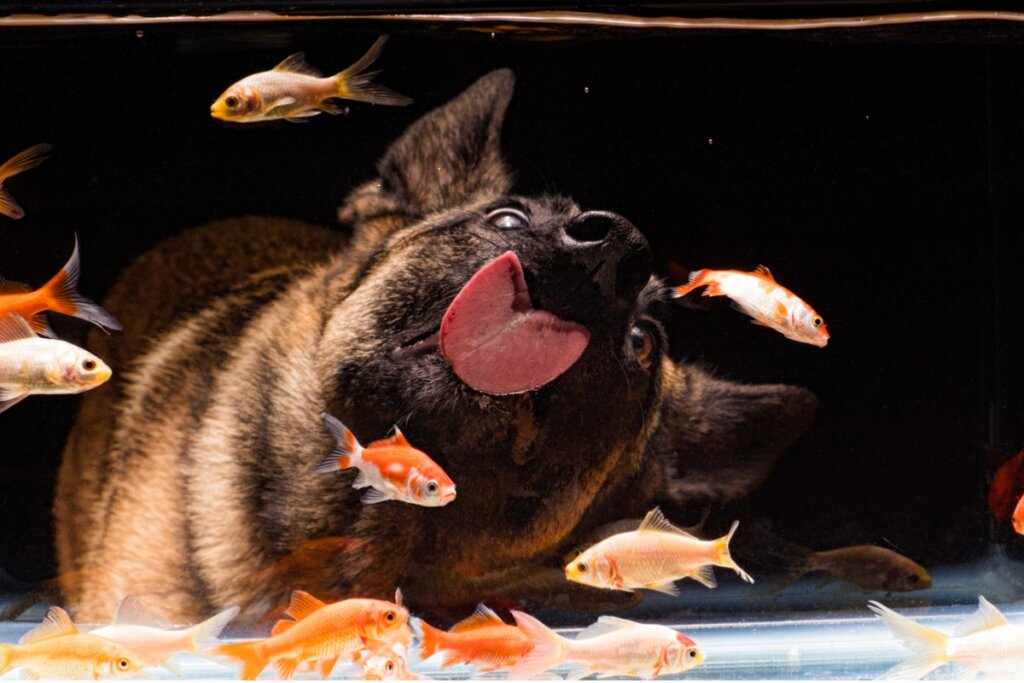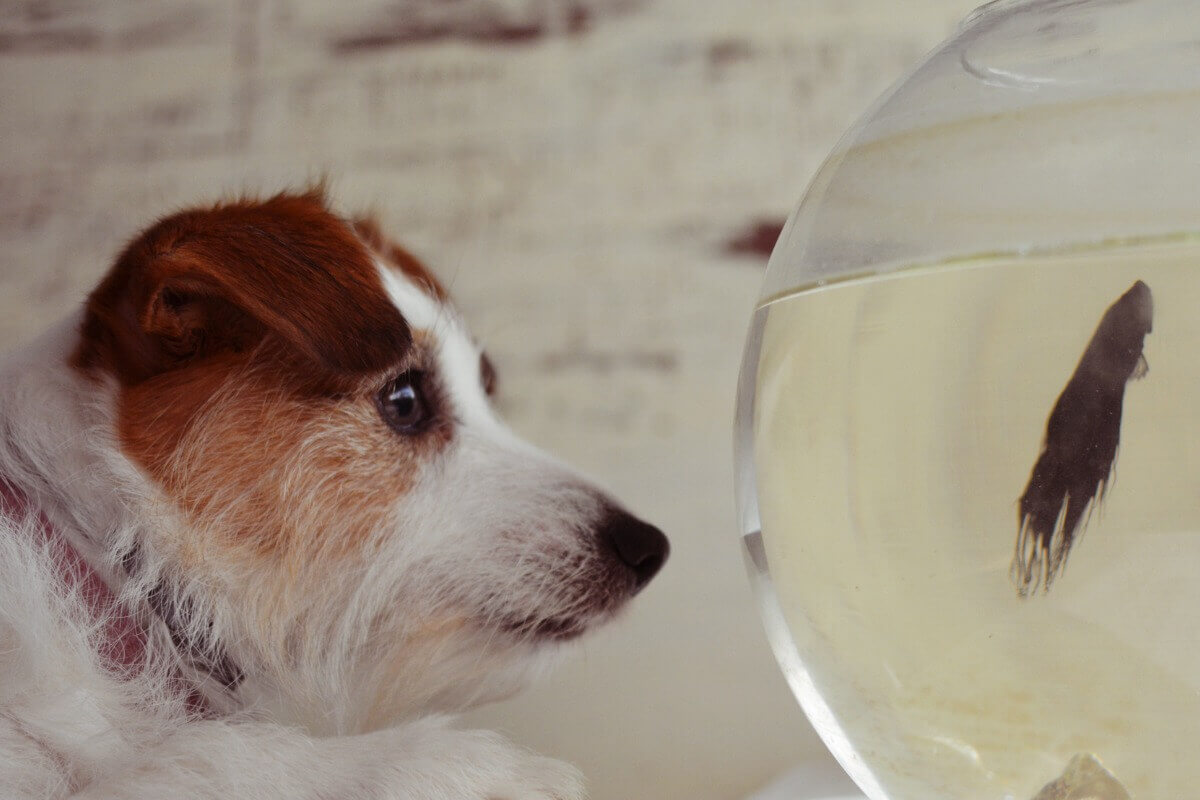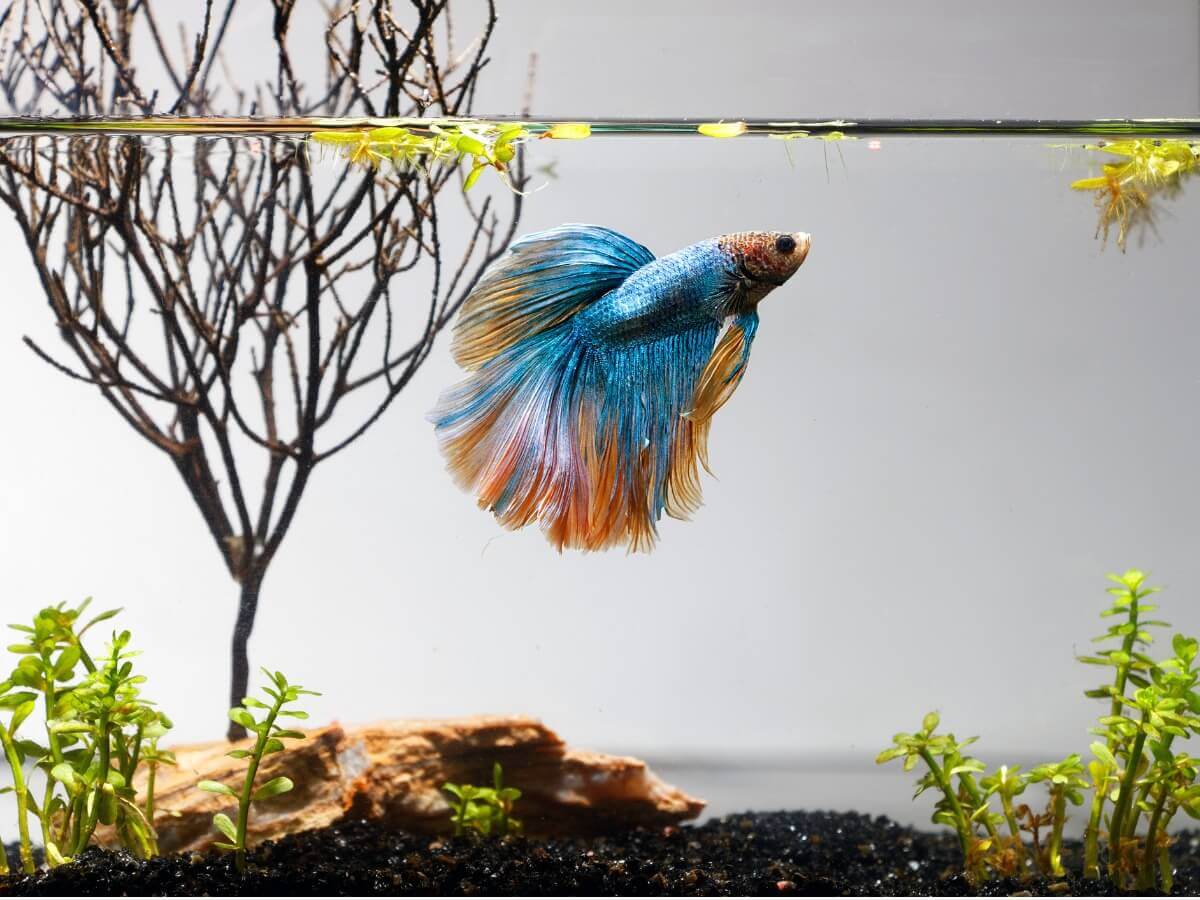Can Dogs Live With Fish?

Can dogs live with fish? It’s not unusual to ask this question, as many guardians want to have a canine in their home and keep an aquarium at the same time. The worry comes when we think about the genes and instincts of domestic dogs, as their ancestors didn’t cease to be predators in the environments they inhabited.
Although the coexistence of small vertebrates with dogs isn’t as complex as in the case of cats, problems can arise if socialization isn’t carried out in the right way. Keep reading, because, in the following paragraphs, we’ll show you if dogs can live with fish in a peaceful way and without incidents.
Can dogs live with fish?
The short answer to this question is a simple and resounding yes, although we need to qualify this answer in several areas. Dogs have become accustomed to living with many domestic species that were originally prey in their natural environment (goats, pigs, and chickens), but their exposure to aquatic animals has been quite limited for obvious reasons.
For this reason, your dog will most likely not know what to think the first time it sees your aquarium. It may be reluctant, alert, or at worst, very interested in its inhabitants. This is more likely if the fish are large and eye-catching (as is the case with goldfish, Carassius auratus). After all, in the eyes of the dog, they’re still food on the move.
However, the biggest problem isn’t predation. The fish are submerged under water, so it’s difficult for the dog to reach them (it’s not as skilled a hunter as a cat). The biggest risk is the dog knocking the fish tank over or putting part of its body in it and hurting itself.
Dogs usually have no interest in fish on a predatory level.

Warning signs
If you’ve already set up your aquarium and have just introduced its members, you should closely monitor your dog’s behavior. Some of the warning signs are as follows:
- The dog keeps looking at the aquarium and its members and is always near the tank.
- In addition, it keeps its tail raised, its ears alert, and its eyes wide open.
- It approaches the tank slowly and with its body bent down.
All of these behavioral signs indicate that the dog is interested in the tank, perhaps too much. If you allow this behavior to continue, chances are you’ll be missing a member of the aquarium before long, or worse, the tank will break if your dog tries to grab it.
Limit contact between the aquarium and the dog
Dogs can live with fish without a problem in most cases but sometimes the household canine is curious or has a more acute predatory instinct than normal (either because of its breed or its condition). In these cases, we recommend that you follow the tips we’ll mention below:
- Keep your aquarium in a high position. Never leave the tank at ground level, as this makes it much easier for the dog to interact with it (for better or worse). This will also limit the direct contact between the fish and the dog, which can be very stressful for them.
- Put a lid on the aquarium. This is essential in all cases (whether you have a dog or not), as sometimes fish jump out of the water and can die. By putting a lid on the aquarium, you also prevent the dog from being able to get its paws inside.
- Place your aquarium in a separate room. If none of the above prevents your dog from becoming obsessed with the tank, simply put it in the room where your dog spends the least amount of time. Close the door every time you interact with the fish.
The secret is in how you introduce the animals to one another
As with almost all interspecific interactions, the secret is in the introductions. You shouldn’t hide the fact that you have an aquarium at home from your dog, as it’s more likely to be interested in it the less he can observe it.
As soon as you introduce the fish to the tank, you can bring your dog close to the fish (always on a leash) and allow it to sniff the external structure of the tank. If you think your dog is going to get too excited, it’s always a good idea to take a walk with it before you conduct the introduction. Once it recognizes the tank, it’ll most likely lose interest when it sees that it can’t interact with the fish.
If this doesn’t happen, you can always prohibit the dog from entering the room where the fish tank is. Use positive reinforcement, i.e. reward it when it doesn’t interact with the fish tank (don’t punish it).

As you can see, dogs can live with fish in the same home without much trouble. If you conduct the introductions properly and keep the aquarium up high, the chances of anything going wrong are minimal.
All cited sources were thoroughly reviewed by our team to ensure their quality, reliability, currency, and validity. The bibliography of this article was considered reliable and of academic or scientific accuracy.
- EFECTOS DE LAS RELACIONES DEPREDADOR-PRESA EN LAS ESTRATEGIAS DE EXPLOTACION Y LA ORDENACION DE LA PESCA, FAO. Recogido a 6 de octubre en http://www.fao.org/3/AC442s/AC442s35.htm
- Can dogs live with fish, WAG! Recogido a 6 de octubre en https://wagwalking.com/sense/can-dogs-live-with-fish
